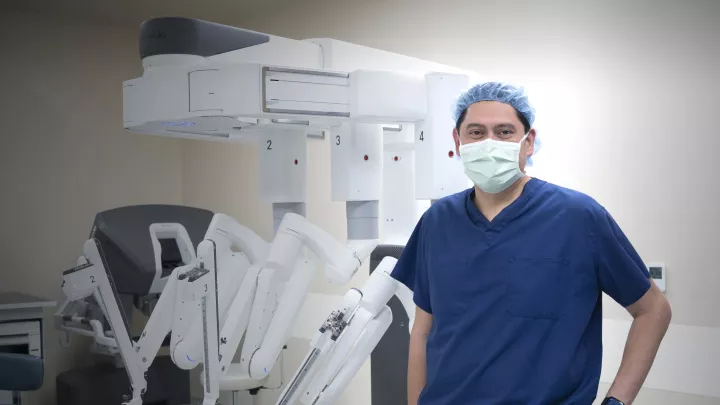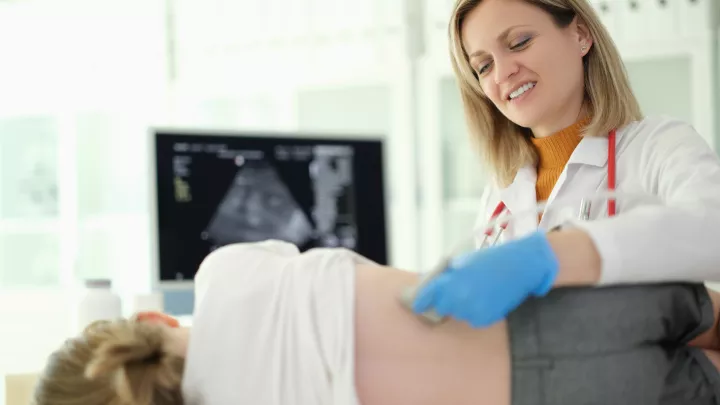Pediatric Urology Diagnosis and Treatment
At Children's Hospital Los Angeles, children receive comprehensive and personalized treatments for all types of urological conditions. We are one of the largest and most advanced pediatric urology programs in the U.S.
Our doctors have dedicated their careers to treating children. Your child receives their pediatric urology treatment from a team that understands the unique needs of babies, children and young adults.
Diagnosis for Pediatric Urology Conditions in Children
Our specialists are experts in the successful treatment of all types of pediatric urology conditions. A detailed diagnosis is the first step. That’s why we offer a wide range of advanced tests and diagnostic tools.
Because we work exclusively with children, all our testing methods are specialized for them. We use child-sized equipment and focus on helping your child feel comfortable during any tests.
Our pediatric urology diagnostic tests include:
Kidney, Ureter and Specialized Urology Scans
DMSA scan for kidneys
A DMSA scan collects detailed images of the kidneys. The test uses a material called dimercaptosuccinic acid (DMSA) and a special camera.
DMSA makes the images clearer and is safe for your child. Your child doesn’t feel the DMSA, and it exits their body within a few hours.
For this test:
- Children receive an intravenous (IV) infusion of DMSA and wait for it to take effect. During this time, you and your child can rest, read books or do other activities.
- Our staff tells you when it’s time to come to the testing room.
- We take you and your child to the testing room for the scan.
MAG3 renal scan
A MAG3 (mercaptuacetyltriglycine) renal scan helps doctors see how your child’s kidneys are working. This test is helpful for diagnosing ureteropelvic junction (UPJ) obstruction and assessing kidney function.
We use an intravenous (IV) line to give children a solution called an isotope. An isotope allows doctors to see the kidneys clearly.
Your child may also need a urinary catheter for this test. A urinary catheter is a tube doctors insert into the urethra, which is where urine exits the body. Learn more about the MAG3 renal scan [PDF].
Magnetic resonance urography (MRU)
Magnetic resonance urography uses radiation-free magnetic waves to get images. The MRU takes detailed pictures of the kidneys, bladder and ureters.
Children receive this test in our magnetic resonance imaging (MRI) scanner. The test requires children to lie still, so younger children often need sedation during the test.
Bladder and Dysfunctional Voiding Tests
- Post void residual (PVR) test
- Renal bladder ultrasound
- Uroflow
- Video urodynamic study (VUDS)
- Voiding cystourethrogram (VCUG)
Post void residual (PVR) test
A post void residual test looks at how well the bladder empties and functions. A PVR is helpful for detecting problems with emptying the bladder.
We use ultrasound imaging to measure urine left in the bladder after a child urinates. An ultrasound uses special sound waves to create images of the inside of the bladder. It is noninvasive and radiation-free.
A PVR usually takes only a few minutes to complete in our Voiding Improvement Program.
Renal bladder ultrasound
During a renal bladder ultrasound, a technician places an ultrasound wand over the child’s pelvic area, abdomen and sides to look at the kidneys and bladder. It is helpful in diagnosing hydronephrosis and other kidney issues.
Uroflow
The Uroflow is a special chair that measures how well the urine flows out of the bladder. The child sits on the chair, which looks like a small toilet. The Uroflow then uses a special flow meter to measure the child’s urination rate.
We may use the Uroflow after another test, such as a video urodynamic study (VUDS). We may also perform a PVR test after a child uses the Uroflow. Together, these tests help us diagnose dysfunctional voiding or other bladder issues.
Video urodynamic study (VUDS)
A video urodynamic study helps us see how well the bladder expands and contracts as it fills and empties. It also looks at how well the pelvic floor muscles hold and release urine. This test is helpful for diagnosing bladder dysfunction (problems with how the bladder holds and releases urine).
The test uses a combination of X-rays and special catheters to measure pressure in the bladder and rectum. CHLA is one of only a few programs in the U.S. using video urodynamics studies exclusively for children.
Voiding cystourethrogram (VCUG)
A voiding cystourethrogram checks the bladder’s size and shape. It also looks for blockages in the urinary system.
We use VCUG to diagnose vesicoureteral reflux (VUR) and to look for causes of urinary tract infections (UTIs).
Treatment for Children’s Urology Conditions
Once you receive a diagnosis, our team walks you through next steps of treatment. With our comprehensive treatment approach, your child gets a complete, customized care plan that covers all their medical needs.
CHLA is an academic hospital that participates in world-leading pediatric urology research. Your child may also be eligible for tests and treatments that aren’t available elsewhere through our pediatric urology research and clinical trials.
Our pediatric urology treatments include:
- Noninvasive pediatric urology treatments
- Minimally invasive pediatric urology treatments
- Reconstructive surgery for pediatric urology
Noninvasive pediatric urology treatments
Whenever possible, we treat children’s urology conditions with noninvasive methods. Noninvasive treatments we offer include:
- Biofeedback (mind-body therapy that teaches muscle control) and interactive video games for bedwetting (enuresis) and voiding dysfunction
- Medications or pelvic floor training for neurogenic bladder
- Medications or nutritional counseling for kidney and urinary stones
- Ultrasound imaging for diagnosis of fetal urology conditions
Minimally invasive pediatric urology treatments
Our minimally invasive and robotic pediatric urology surgery uses the latest technology to treat conditions with smaller incisions and less complications. Our minimally invasive techniques include:
- Bladder augmentation to treat neurogenic bladder
- Bladder diverticulectomy to remove a blockage in the bladder
- Mitrofanoff procedure for neurogenic bladder
- Pyeloplasty to correct ureteropelvic junction (UPJ) obstruction
- Ureteral reimplantation, which treats vesicoureteral reflux
Reconstructive surgery for pediatric urology
Our surgeons have performed thousands of reconstructive urology surgeries to treat conditions like bladder exstrophy, congenital adrenal hyperplasia (CAH) and neurogenic bladder. We perform:
- Bladder outlet surgery (bladder neck reconstruction and sling placement) for neurogenic bladder
- Complete primary repair for bladder exstrophy
- Genital reconstruction for proper function in congenital adrenal hyperplasia (CAH)
- Hypospadias repair for proper urinary function
- Urinary diversion or stoma surgery for neurogenic bladder
Learn more about the treatments we provide through our pediatric urology programs and services.


